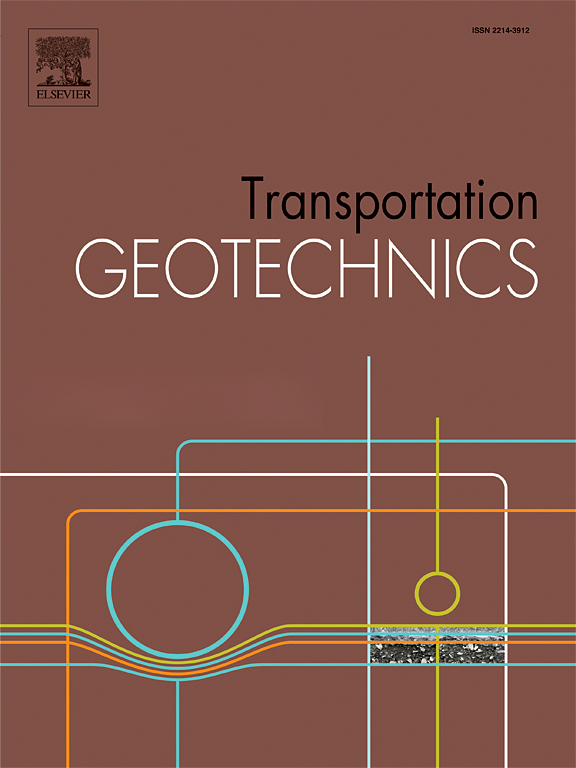Characterising geomaterial shakedown and related deformation accumulation from cyclic triaxial tests
IF 4.9
2区 工程技术
Q1 ENGINEERING, CIVIL
引用次数: 0
Abstract
Permanent deformation accumulation in soils and unbound granular materials under repetitive loading leads to surface rutting in roads and deterioration of track geometry in railways, eventually requiring costly and disruptive maintenance. Cyclic or repeated load triaxial tests are a convenient test method to characterise the permanent deformation behaviour of different soils under high numbers of load repetitions and a large volume of data is available. Existing empirical functions either take no account of shakedown, leading to an over-prediction of deformations at a high number of load cycles, or those that do take account of shakedown contain a high number of regression parameters that make them difficult to use. A simple empirical function with only one input parameter is proposed to characterise the accumulation of permanent axial strain in cyclic triaxial tests on a wide range of geomaterials undergoing shakedown deformations. It is shown to give predictions of a similar accuracy to existing functions at low numbers of load cycles and increased accuracy at high numbers of load cycles. It is shown to be applicable to soils ranging from a high plasticity clay to a rail ballast, across a range of stress states, stress history and strain levels provided that ratcheting deformations do not occur. The single input parameter has a physical meaning and is related to the permanent deformation required to reach the shakedown condition. Since the proposed function predicts the slowing rate of deformation accumulation towards shakedown not covered by the commonly-used existing functions, it could lead to more economical designs of applications involving high numbers of load repetitions. Its broad application to both coarse granular materials and fine-grained soils should streamline the design of applications involving layers of both these material types without the need to change empirical function.
求助全文
约1分钟内获得全文
求助全文
来源期刊

Transportation Geotechnics
Social Sciences-Transportation
CiteScore
8.10
自引率
11.30%
发文量
194
审稿时长
51 days
期刊介绍:
Transportation Geotechnics is a journal dedicated to publishing high-quality, theoretical, and applied papers that cover all facets of geotechnics for transportation infrastructure such as roads, highways, railways, underground railways, airfields, and waterways. The journal places a special emphasis on case studies that present original work relevant to the sustainable construction of transportation infrastructure. The scope of topics it addresses includes the geotechnical properties of geomaterials for sustainable and rational design and construction, the behavior of compacted and stabilized geomaterials, the use of geosynthetics and reinforcement in constructed layers and interlayers, ground improvement and slope stability for transportation infrastructures, compaction technology and management, maintenance technology, the impact of climate, embankments for highways and high-speed trains, transition zones, dredging, underwater geotechnics for infrastructure purposes, and the modeling of multi-layered structures and supporting ground under dynamic and repeated loads.
 求助内容:
求助内容: 应助结果提醒方式:
应助结果提醒方式:


